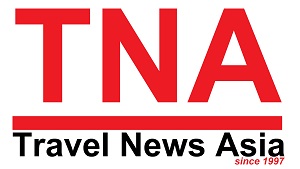|
Given that tourism is a global industry
consuming a diversity of goods and services, the prediction of
future trends needs to take account of the wider economic context,
according to Professor Brian King and Dr Stephen Pratt of the
School of Hotel and Tourism Management (SHTM) at The Hong Kong
Polytechnic University and a co-author.
In a recently published
study, the researchers use publicly available data to try and improve
predictions about hotel occupancy rates in different classes of
Hong Kong hotels. Their method can be adopted by individual hotels
that have insufficient resources to collect expensive data, or for
employing consultants, to predict demand. The researchers maintain
that this has important implications for the hotel sector, both in
Hong Kong and elsewhere.

Occupancy forecasting is
more than just a way of predicting demand it can also determine
profitability. Indeed, the researchers warn that inaccurate
forecasting of hotel occupancy rates can lead to costly decisions.
If a hotel is predicted to have strong bookings three months
ahead, the relevant departments may start to deploy additional
resources accordingly. For instance, the bookings department may
stop taking lower-yield reservations and additional staff may be
employed to cope with the extra demand. Yet if the prediction
turns out to be over-optimistic, a wastage of resources is likely
to ensue, leading to loss of revenue, the study claims. In the opposite case, a
shortage of resources and staff may occur when demand exceeds what
has been predicted.
Both scenarios can be damaging
for a hotels reputation. Even a hotel that is internally
proficient and offers friendly effective staff and efficient
systems and procedures will suffer a drop in occupancy rates if
the external economic environment is soft, argue the
researchers.
Nevertheless, while it is agreed that
hotels should base their budgets on forward-looking occupancy
rates, this is in practice challenging, according to the
researchers, because the industry is highly competitive and
vulnerable to volatile political and economic conditions, locally
and internationally. Other factors, such as the development of
online technologies and the growth of internet travel agencies,
have also changed the way hospitality organisations distribute
and price their products and made it more difficult to predict
demand.
Yet tourism operators can benefit from
informative longer and shorter term economic insights when
predicting future trends, the researchers argue. Many
international hotel chains have the comfort of sufficient
resources for the deployment of intelligent systems and for
investments in the development of accurate forecasts to address
the volatile and difficult prediction of hotel occupancies. Other
well-resourced hotels recruit in-market expertise to improve
their predictions of demand. Nevertheless, smaller and independent
hotels can rarely afford to invest in such resources, although
their need for accurate predictions is just as great.
The internet, however, offers access to potentially useful
information that could be used to improve the accuracy of
forecasting for even the most resource constrained of hotels. The
researchers looked at easily accessible online data that is
available from the Organisation for Economic Cooperation and
Development (OECD). The OECD, established in 1957, comprises 34
member states and a further 25 non-member states, including China,
that participate as committee observers. Its purpose, the researchers note, is to gather economic statistics from members
that are used to provide comprehensive information about the
global economy.
The OECD produces various
quantitative indicators of specific aspects of the global economy,
three of which were used by the researchers. First, the composite
leading indicator (CLI) combines various economic variables, such
as GDP, that indicate a countrys economic situation and provide
early signals of turning points in economic activity. The
researchers predicted that the CLI for tourist origin countries
would predict hotel occupancy rates in the destination country.
The business survey index (BSI) collects qualitative
information from business executives and managers that is
reflective of confidence within the business community about
prevailing economic conditions. The researchers argue that the
BSI reflects the motives of business travellers and conference
delegates, which affect the volume of business in the
accommodation sector.
The consumer confidence index
(CCI), in contrast, reflects consumer sentiment based on the
economic climate and household finances. The information is
collected through a monthly survey of 19 member and non-member
countries. The researchers predicted that more positive feelings
towards the local economy expressed through the CCI would be
associated with increased hotel occupancies in the destination.
To test their predictions, the researchers used
quarterly data on hotel occupancy rates in Hong Kong from the
first quarter of 1972 up to the final quarter of 2010. They
initially applied a method of smoothing the data to reduce the
effects of seasonal fluctuations, so that they could identify the
real peaks and troughs that reflected upturns and downturns in
demand.
In the next step, they assessed the
abilities of the three OECD indicators to predict peaks and
troughs in the Hong Kong hotel occupancy data, categorised
according to the Hong Kong Tourism Boards classification of
hotels as high tariff A, high tariff B and medium tariff hotels.
First, they demonstrated that the three OECD indices
are leading indicators of hotel occupancy rates by showing that
changes in the indices occurred before changes in demand. Then,
they determined the correlations between each OECD indicator and
the peaks and troughs in demand for each hotel type, finding that
the CCI is the best predictor of overall Hong Kong hotel occupancy
rates. However, the CLI provides better predictions for tariff B
hotels.
The researchers suggest that their method
could be used by hoteliers to supplement their revenue management
systems and to formulate their own predictive systems. Although
they used expensive statistical software to perform their
analyses, they explain that hoteliers could easily download the
relevant OECD data for their own source markets and conduct
analyses in Excel, which are used by most businesses. Rather than
deploying generic data on hotel categories, individual hotels
could take their own occupancy data and apply the OECD indicators
to predict their future occupancy rates.
This
approach, the researchers argue, offers the prospect of optimal
hotel resource utilization and improved management. Indeed, the
use of publicly available data, such as the OECD indicators, makes
it possible to plan for and target distinct markets at different
times, rather than simply relying on historical occupancy rates.
The researchers use Hong Kong as an example to
demonstrate their method of forecasting demand because it is a
leading international tourism destination and has a diverse and
substantial accommodation sector. However, the method could be
applied as readily in other markets. And although they used data
from the OECD, the researchers note that other sources are
available, such as the World Tourism Barometer which is produced
by the United Nations World Tourism Organisation and outputs from
the Australian governments Tourism Forecasting Reference Panel.
There is, they explain, growing interest at both national and
international levels in improving the accuracy of predictions
through multiple inputs. The greater availability of such data,
and the use of relevant methods to exploit them, means that
policymakers and hoteliers will be better equipped to predict
future demand.
|
Headlines: |
|
See latest
HD Video
Interviews,
Podcasts
and other
news regarding:
PolyU,
SHTM,
Trends,
Hong Kong,
RevPAR,
ADR,
Forecast.
|
